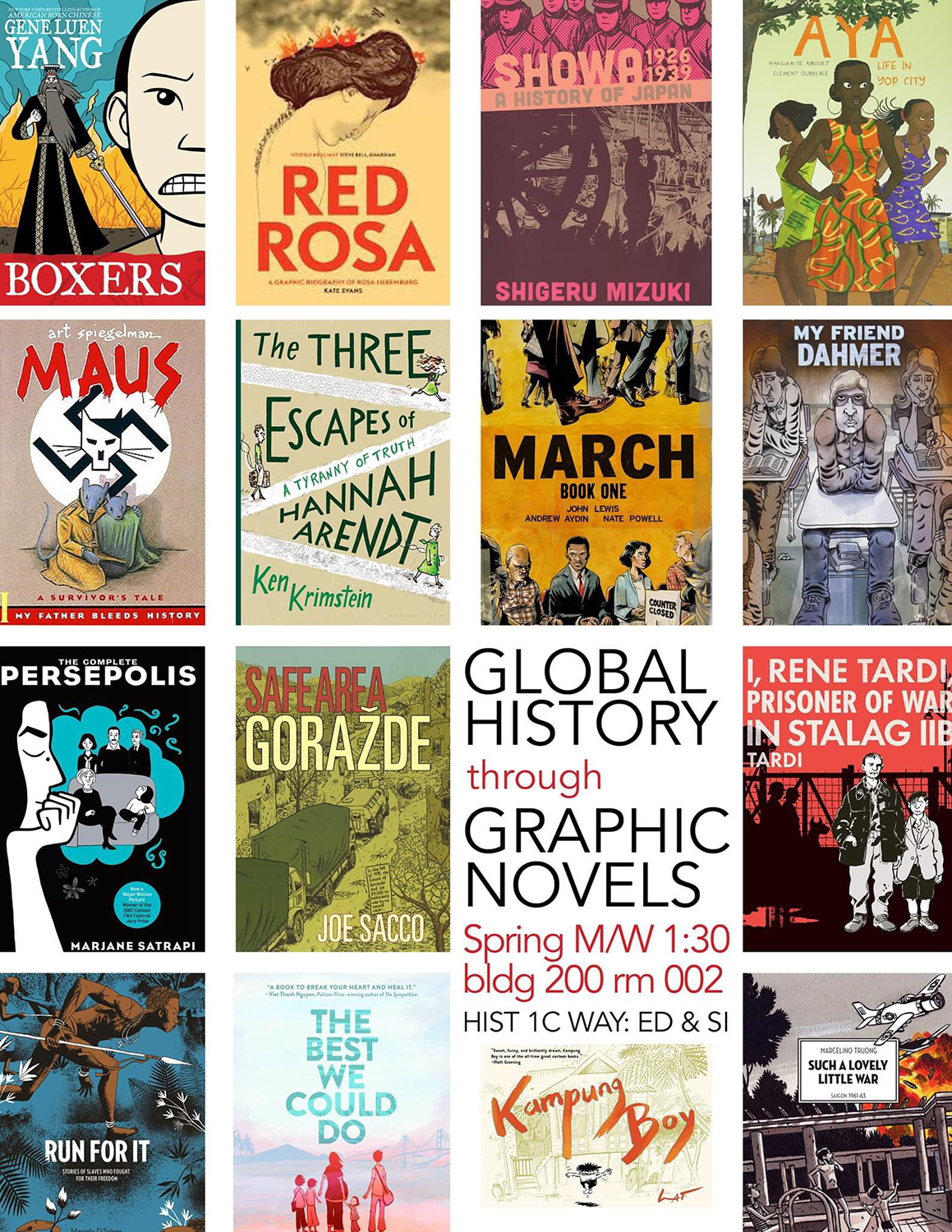Graphic novels can accelerate critical thinking, capture nuance and complexity of history, says Stanford historian
Historical graphic novels can provide students a nuanced perspective into complex subjects in ways that are difficult, and sometimes impossible, to characterize in conventional writing and media, says Stanford historian Tom Mullaney.
Global history is not just significant events on a timeline, it is also the ordinary, mundane moments that people experience in between. Graphic novels can capture this multidimensionality in ways that are difficult, and sometimes impossible, in more traditional media formats, says Stanford history professor Tom Mullaney.

Tom Mullaney, a professor of history in the School of Humanities and Sciences, uses graphic novels in his teachings to help students appreciate different experiences and perspectives throughout history. (Image credit: Ilmiyah Achmad)
Mullaney has incorporated graphic novels in some of his Stanford courses since 2017; in 2020, he taught a course dedicated to the study of world history through comic strip formats.
While graphic novels are not a substitute for academic literature, he said he finds them a useful teaching and research tool. They not only portray the impact of historic events on everyday lives, but because they can be read in one or two sittings, they get to it at a much faster rate than say a 10,000 word essay or autobiography could.
“It accelerates the process of getting to subtlety,” said Mullaney, a professor of history at Stanford’s School of Humanities and Sciences. “There’s just so much you can do, and so many questions you can ask, and so many perspective shifts you can carry out – like that! You can just do it – you show them something, they read it and BOOM! It’s like an accelerant. It’s awesome.”
For example, in Thi Bui’s graphic novel The Best We Could Do, themes of displacement and diaspora emerge as she talks about her family’s escape from war-torn Vietnam to the United States. The illustrated memoir shows Bui’s upbringing in suburban California and the complicated memories her parents carry with them as they move about their new life in America. In other chapters, she depicts her mother and father back in Vietnam and what their own childhood was like amidst the country’s upheaval.
Graphic novels like The Best We Could Do and also Maus, Art Spiegelman’s seminal portrayal of his Jewish family’s experience during the Holocaust, illustrate the challenges and subtleties of memory – particularly family memory – and the entanglements that arise when narrating history, Mullaney said.
Graphic novels prime readers for the complexity of doing and reading historical research and how there is no simplistic, narrative arc of history. “When I read a graphic novel, I feel prepared to ask questions that allow me to go into the harder core, peer-reviewed material,” Mullaney said.
The everyday moments that graphic novels are exceptionally good at capturing also raise questions in the reader’s mind, Mullaney said. Readers sit in the family living room and at the kitchen table with Spiegelman and Bui and follow along as their characters try to understand what their parent’s generation went through and discover it’s not always easy to grasp. “Not everything mom and dad say makes sense,” said Mullaney.
These seemingly mundane moments also present powerful opportunities for inquiry. “The ordinary is where the explanation lives and where you can start asking questions,” Mullaney added.
Graphic novels can also depict how in periods of war and conflict, violence can become part of everyday existence and survival. The simplicity of the format allows heavy, painful experiences to emerge from a panel untethered and unweighted from lengthy descriptions or dramatizations.
“They’re banal. They’re not dramatic. There are no strings attached. In a work of nonfiction, in an article or book, it would be almost impossible to do that. There would have to be so much expository writing and so much description that you would lose the horror of it,” Mullaney said.
A ‘fundamental misunderstanding’
Graphic novels like Maus and The Best We Could Do were included in Mullaney’s 2020 Stanford class, Global History Through Graphic Novels.

In 2020, Tom Mullaney, a professor of history, taught Global History Through Graphic Novels, a course that paired graphic novels such as Art Spiegelman’s Maus with archival materials and historical essays to examine modern world history from the 18th to the 21st century. He created a poster for the class, as shown here. (Image credit: Tom Mullaney)
In the course, Mullaney paired graphic novels with archival materials and historical essays to examine modern world history from the 18th to the 21st century.
The course syllabus also included the graphic novels Showa, Shigeru Mizuki’s manga series about growing up in Japan before World War II, and Such a Lovely Little War, about Marcelino Truong’s experience as a child in Saigon during the Vietnam War.
Most recently, Mullaney has offered to teach a variation of the Stanford course to the public, free for high school and college students, this summer.
Registration for the online course opened shortly after news emerged and made international headlines that Maus was banned by a Tennessee school board for its depiction of nudity and use of swear words.
Within two days of Mullaney’s course registration opening, over 200 students from across the world signed up.
Mullaney believes that there is a “fundamental misunderstanding” about what young people can process when it comes to negotiating complex themes and topics – whether it is structural racism or the Holocaust. They just need some guidance, which he hopes as a teacher, he can provide.
“I think students of high school age or even younger, if they have the scaffolding they need – which is the job of educators to give them – they can handle the structural inequalities, darknesses and horrors of life,” he said.
Mullaney noted that many teenagers are already exposed to many of these difficult issues through popular media. “But they’re just doing it on their own and figuring it out for themselves – that’s not a good idea,” he said.
Mullaney said he hopes he can teach Global History Through Graphic Novels to Stanford students again this fall.
For Stanford scholars interested in learning more about the intersection of graphic novels and scholarship, there is a newly established working group through the Division of Literatures, Cultures and Languages, Comics, More than Words.
